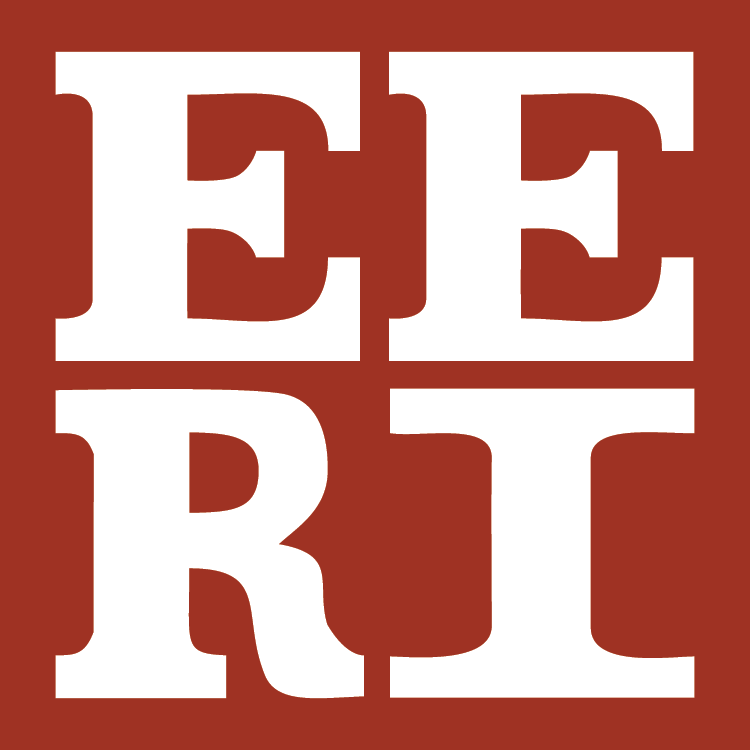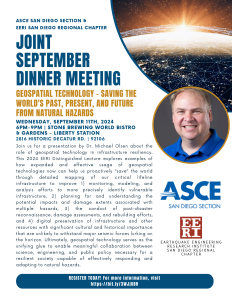Speaker Information: 7th Kenji Ishihara Colloquium Series on Earthquake Engineering
Fault Displacement
Speakers and Abstracts
Dr. Norman Abrahamson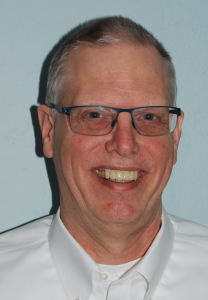
Adjunct Professor, University of California, Berkeley and University of California, Davis
Selection of Design Fault Displacements for Moderate-Activity Faults
Abstract: Design ground-motion values are commonly based on probabilistic seismic hazard analysis (PSHA), whereas design fault displacement values have often been estimated using deterministic seismic hazard analysis. To treat ground motion and fault displacement consistently, there has been a growing demand for probabilistic fault-displacement hazard analysis (PFDHA) for selecting design fault displacements; however, choosing the fault displacement from a PFDHA based on the same return period as used for the ground motion may not lead to consistent levels of risk for moderate-activity faults (slip rate between 0.2 and 2 mm/yr) if the hazard curve has a flat slope at the selected return period. In this case, the epistemic uncertainty in the slip rate on the fault will lead to a very large range for the fault displacement at the selected return period.
For moderate-activity rates, alternative approaches for selecting a design fault displacement are described: risk-targeted displacement approach, high-fractile hazard approach, and median displacement given surface rupture at the site approach. If it is not practical to design for the fault displacement, an alternative approach is described in which an emergency action plan is developed to respond to the expected damage from fault displacement rather than design the structure to withstand the fault displacement.
Bio: Dr. Abrahamson is an internationally-known expert in seismic hazard and risk analyses, with a focus on the practical application of engineering seismology to the development of deterministic and probabilistic seismic criteria for engineering design and evaluations of seismic risk. He has been involved in developing or reviewing design ground motions for hundreds of critical infrastructure projects around the world. He is an adjunct professor at UC Berkeley, and UC Davis, where he teaches a graduate course on seismic hazard analyses, development of design time histories, and seismic risk. His current research is focuses on non-ergodic ground-motion and fault rupture models, treatment of aleatory variability and epistemic uncertainty in site response, numerically efficient methods for evaluating seismic hazard for complex source and ground-motions, and decision making using hazard or risk estimates with large epistemic uncertainties.
Frank Bannon, P.E.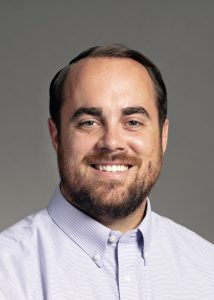
Senior Engineer, Reid Middleton, Inc.
Evaluation of Existing Buildings Located on Active Fault Lines
Abstract: Current building regulations generally prevent new construction on known active fault lines due to fault rupture hazards. However, there is limited guidance on how to evaluate existing buildings that were constructed on fault lines before these regulations were put in place. ASCE 41 provides minimal guidance on analyzing and mitigating fault rupture hazards. This presentation is intended to initiate discussion about how engineering professionals can evaluate existing structures on fault lines that are subject to fault rupture. Included in this presentation is a case study of a 10-story reinforced concrete shear wall building with deep pile foundations where a recent geological investigation revealed that several fault lines were located directly underneath the building, with the potential to cause fault rupture at the surface level.
Bio: With more than 10 years of structural design experience, Frank works as a senior engineer and project manager for Reid Middleton, Inc. in San Diego, California. His project experience includes various structure types, including concrete tilt-up, concrete tanks, steel frames, steel pedestrian bridges, and retaining walls. He also has experience conducting seismic evaluations and provided associated seismic retrofit concept design. Frank is a licensed Civil Engineer in California. He holds a Bachelor of Science degree in Civil Engineering from the University of Delaware.
Craig D. Comartin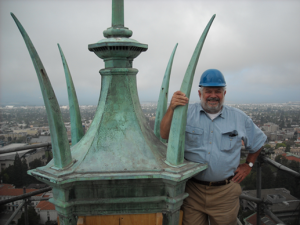
President, CDComartin, Inc.
Structural effects of large seismically induced permanent ground displacements
Unfortunately, Dr. Comartin is no longer able to present at this year’s colloquium.
Abstract: This presentation comprises three parts. First observations of building and foundation performance from past earthquakes are reviewed. From these the design implications for new and existing construction are presented. Finally, three case studies are presented as examples of applications of soil structure interaction for large permanent displacements of structures. The first is the construction of the state of Alaska Supreme Court building constructed upon the existing L Street Slide in Anchorage, AK. Two more examples are discussed both of which are on the University of California, Berkeley campus, one being the retrofit of California Memorial Stadium and the other being the retrofit of Bowles Hall immediately north of the Stadium.
Bio: Craig D. Comartin is a structural and geotechnical engineer with over 50 years of experience. His work includes both research and practical applications. He has developed procedures for including the effects of soil structure interaction there are now considered the standard in the industry. This includes the subject of this presentation on large permanent displacements at surface expressions of fault movement. He is former president of the Earthquake Engineering Research Institute. In this capacity he was instrumental in establishing local chapters of EERI including in San Diego. He has filed reports on numerous earthquakes from around the world. He is an honorary member of EERI and the Northern California Structural Engineers Association. He was awarded the Alfred Alquist Medal for his work raising awareness of non-ductile concrete buildings and the development of procedures for construction of unreinforced masonry buildings in economically challenged areas of the world.
Jim Gingery, Ph.D., P.E., G.E.
Chief Engineer, Keller North America
Deep Soil Mixing Design and Construction for Surface Fault Rupture Mitigation
Abstract: Deep soil mixing ground improvement was used to mitigate surface fault rupture and liquefaction hazards for a pump station with wet wells up to 36 feet deep. Paleoseismic field investigations were performed to characterize the site, then deterministic and probabilistic fault rupture displacement estimates were made and used to develop design scenarios. The fault rupture mitigation design consisted of a solid block of DSM encompassing and protecting the pump station and its wet wells. Three-dimensional soil-structure interaction numerical modeling of the fault rupture scenarios was performed as part of the design. The analyses showed the fault rupture displacements could be diverted by the DSM and that satisfactory structure performance could be achieved. The presentation concludes with an overview of the DSM construction, and quality control and assurance.
Bio: Dr. Gingery is a Chief Engineer at Keller leading a team providing ground improvement and geostructural engineering for design-build projects across the Western U.S. and beyond. Dr. Gingery holds an M.S. in geotechnical engineering from UC Berkeley and a Ph.D. in geotechnical earthquake engineering from UC San Diego. He has more than 27 years of experience in research, consulting, design, and construction, and is a license professional engineer in multiple states. In 2015, he was awarded the Shamsher Prakash Prize for Excellence in the Practice of Geotechnical Engineering.
Zeynep Gulerce, Ph.D.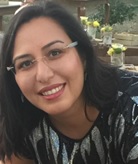
Nuclear Safety Officer, International Atomic Energy Agency
The IAEA Probabilistic Fault Displacement Hazard Assessment Exercise
Abstract: IAEA Safety Standards Series No. SSR-1, Site Evaluation for Nuclear Installations, identifies fault capability as one of the potential challenges to the safety of nuclear installations. In the site selection and characterization of new nuclear installation sites, sufficient geological, geophysical, geotechnical and seismological data are obtained to demonstrate the existence of a capable fault at or near the site. Although the capable fault issues are expected to be addressed at these stages, subsequent studies may reveal that there is potentially a capable fault in the site vicinity of existing nuclear installations. For this case, IAEA Safety Standards Series No. SSG-9 (Rev. 1), Seismic Hazards in Site Evaluation for Nuclear Installations, recommends the assessment of the potential for fault displacement using probabilistic methods. In the past decade, challenges associated with the application of probabilistic fault displacement hazard analysis (PFDHA) in different tectonic settings have been recognized, and new and improved empirical fault displacement models have been published. To follow up on the recent advances in this field and for a better understanding of the PFDHA results for scenarios that may be related to nuclear installations, the IAEA designed a PFDHA exercise. This exercise aims to support the implementation of the recommendations given in SSG-9 (Rev. 1) by comparing the hazard results and interpreting the pieces of the PFDHA that contributes to the observed differences.
Bio: Zeynep Gulerce is a Nuclear Safety Officer and responsible technical officer for the IAEA Benchmarking Exercise on Probabilistic Fault Displacement Hazard Assessment. In IAEA, Ms. Gulerce is working on the tasks related to hazards from external events that may impact the safety of nuclear installations. Before taking her position in IAEA, she had worked as a full-time faculty member in Middle East Technical University and part-time consultant for the Turkish Nuclear Regulatory (NDK). Ms. Gulerce’s research efforts were focused on the state-of-the-art in seismic hazard assessment, characterization of design ground motions, and geotechnical earthquake engineering, which led to the publication of numerous scientific papers, book chapters, and technical reports. She has more than 20 years of experience in the analysis of earthquake hazards/risks, as a civil engineer working in a seismically-active country. She had provided technical consultancy to several large-scaled construction companies of Turkey, specifically on the analysis of geo-hazards for site characterization, inspection, review and assessment of hazards for defining the site parameters, and licensing procedures.
Monte Marshall, Ph.D.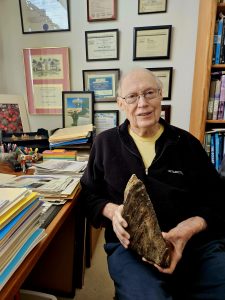
Professor Emeritus, San Diego State University
The Resolution of Two Important Questions About the Nature of the San Andreas Fault
Abstract: The San Andreas fault is one of the longest and probably the most famous and well-studied strike-slip faults in the world, but geologists knew surprisingly little about it before the devastating 1906 San Francisco earthquake. In this talk, I will discuss two advances in our current understanding of this important fault: how the modern discovery of plate tectonics resolved a decades-long controversy about the very large total offset on the fault, and why a 170 km length of the fault in central California generates only minor earthquakes.
Geologists at UC Berkeley had just finished mapping the San Andreas fault from northern California south to the Imperial Valley only months before the earthquake. But they had no idea of its terrible potential. Immediately after the earthquake, the California governor authorized a state commission of geologists, mostly from UC Berkeley and Stanford, to study the fault and ground conditions responsible for the catastrophic damage and loss of lives. They were amazed when they found that the fault had slip/ground rupture that extended almost 400 kilometers. It was the longest fault rupture that had ever been recorded! They found that the slip between the two sides was usually horizontal, or “strike-slip.” The commission geologists found the rupture extended south of San Francisco 130 km to the small town of San Juan Bautista. They traced it north 250 km to Point Arena, where the fault goes out to sea. The maximum offset was 6 m near Point Reyes, about 50 km north of San Francisco. In the decades following the 1906 San Francisco earthquake, geologists began to find unusual rock types and complicated structures that were cut by the San Andreas fault, lay on both sides of the fault, but the two ‘halves’ were 200 km to 300 km apart! This much total offset on the fault was very controversial, and for good reasons seemed mechanically impossible! For example, when the Earth’s crust on the west side of the San Andreas moved north about three meters at Point Reyes and didn’t move at all 130 km to the south at San Juan Bautista, that length of the crust would be under tension. And the crust on the west side of the San Andreas from Point Reyes north to where the fault ends would be under compression. The physical effects of the tension and compression associated with only a few meters of differential offset spread over thousands of meters would be negligible. But 300 km of total offset on a fault that was believed to end on the north at Cape Mendocino and end 1000 km to the south near the Salton Sea, was (correctly) thought impossible! With only a fraction of 300 km of total offset, at each end there should be mountains on one side of the fault and a gigantic, very deep hole on the other! The controversy about the total amount of offset on the San Andreas raged until 1969, when the new paradigm of plate tectonics was proven. A symbiotic combination of oceanographers, seismologists, and geophysicists discovered that the earth’s outer 100 km was broken into slabs, called “plates”, that move relative to one another. In the late nineteen sixties, the Mid-Atlantic Ridge and East Pacific Rise were proven to be seafloor spreading centers, i.e., places where oceanic plates diverge. The deep sea trenches were also quickly shown to be subduction zones, i.e., places where an oceanic plate dives under another oceanic plate or a continental plate. But, a third kind of plate margin was observed, one where crustal slabs slide past one another along a new kind of fault, called a “transform” fault. And, if the San Andreas fault is a transform fault, there would be no mechanical problem with it having hundreds of kilometers of strike-slip displacement! In 1970, a brilliant grad student at Scripps Institute of Oceanography, Tanya Atwater, used the marine magnetic anomally data off the west coast of North America to show when and how the San Andreas fault was born as a transform plate boundary between the North American and Pacific plates. And, at about the same time, marine magnetic anomalies at the mouth of the Gulf of California enabled oceanographers to both date when Baja California rifted away from mainland Mexico (about 5 Ma), and the rate (about 50 mm/yr) at which Baja and Alta California have been moving north. This rate of 50 mm/yr is the accepted value for the rate at which the Pacific plate is moving northward past the North American plate, i.e., the combined rates of all the strike-slip faults in the San Andreas System. The section of the San Andreas fault that lies between the southern end of the 1906 rupture at San Juan Bautista and the northern end of the great 1857 Ft. Tejon earthquake rupture near Cholame is unusually quiet. Called the “creeping zone”, plate movement in this 170 kilometer-long section consists only of aseismic slip, and many small and occasional moderate (M6) earthquakes. The rocks in this length continuously slide past one another. The two most popular ‘end-member’ explanations for this unusual behavior are that the fault gouge along this length of the San Andreas has an unusually low coefficient of friction, or that unusually high water pressure in the fault zone greatly reduces the normal stress between the slip surfaces. To help understand what makes this section so special, a well was drilled near its southern end in the summers of 2004 to 2007. The well was drilled vertically at first and then deviated to intersect a seismically active zone at a depth of 2.7 km. Cores were taken of the fractured rocks in the fault zone and samples were obtained of the fault gouge. The fault gouge was found to consist of a special clay having a friction coefficient as low as 0.1! At least at this site in the creeping section, a very slippery fault gouge appears to be more influential than pore pressure in preventing the large build-up of shear strain that has proved so disastrous in regions to the north and south.
A geophysics professor from Johns Hopkins, H. F. Reid, made another important, but much less obvious, observation. He noticed that the location of points, as measured by several geodetic surveys made over the thirty years before the earthquake, differed systematically with their location measured shortly after the earthquake. The Earth’s crust out to a distance of about 10 km from the SAF had been gradually bent during the 30 years before 1906, but the crustal bend was gone after the earthquake. He realized that a huge amount of elastic strain energy had been accumulating in this bend during the past thirty years, and probably a lot more since the previous earthquake. So, he proposed that the cause of the earthquake was the release of the energy stored in the bent rocks on both sides of the fault when the rocks suddenly rebounded during the fault slip. “Elastic rebound” is still considered the energy source of most earthquakes.
Bio: “As a fourth-generation San Diegan, I was born in Mercy Hospital in 1939. I attended St. Augustine High School, and then headed east to Philadelphia where I attended Villanova University. I majored in philosophy and minored in astronomy. Upon returning to San Diego, I enrolled at SDSU as an astronomy major. My uncle was a meteorology prof at SDSU, and at lunch he introduced me to the chairman of the geology department, Baylor Brooks. Baylor asked me if I had room in my class schedule for his intro geology class. I did, and he was such an inspiring prof and the field trips were so much fun, that I changed my major to geology and geophysics! After getting my second bachelor’s degree in 1966, I went up to Stanford for my PhD in geology and geophysics. My thesis was on the magnetic properties of seafloor basalts. The theory of plate tectonics was being debated then, and I was able to show that the one kilometer thick layer of seafloor basalt was so strongly magnetized that it was the source of the linear marine magnetic anomalies that proved plate tectonics. After grad school, I went to work in 1971 at the US Geological Survey in Menlo Park for 4 years.
“Since I really wanted to teach, as well as research, I returned to San Diego and SDSU, where I was a professor for almost 30 years. I taught courses in geophysics, structural geology, beginning geology, and paleomagnetism and plate tectonics. The research I conducted with my students was using detailed gravity surveys across the faults of metropolitan San Diego to measure their throw/vertical displacement. I also had many MS students who used the magnetization direction in cores drilled in igneous rocks to measure the tectonic rotation of the Peninsular Ranges and blocks of the Earth’s crust between the many faults in the Imperial Valley and western Arizona. I had three sabbatical years and lived, taught, and did research, at universities in France, Russia, and the Czech Republic.
“I retired in 2005 and have been busy doing geologic community service (teaching the new docents and nature hike leaders at the SD Museum of Natural History, and giving talks to various groups), and writing papers on the geologic history of the Southwest for the annual field trip guidebooks of the San Diego Association of Geologists.”
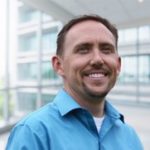
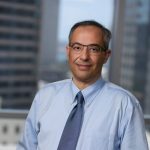 Sami Megally, Ph.D., P.E., S.E. and Keith Gazaway, P.E.
Sami Megally, Ph.D., P.E., S.E. and Keith Gazaway, P.E.
Kleinfelder
Design and Construction of the Light Rail Transit Overhead Crossing Seismic Fault Zones
Abstract: The Rose Creek LRT Overhead is a 12-span light rail bridge constructed as part of San Diego’s 11-mile Mid-Coast Corridor Transit Project. The bridge crosses the active LOSSAN rail corridor and the Rose Canyon Fault Zone, which intersects two spans and their foundations. Estimated surface rupture displacements were approximately 5 feet longitudinally and 1.2 feet vertically. A multi-disciplinary structural and geotechnical approach was used to develop a fault rupture–resilient design, incorporating detailed site investigations, soil–structure interaction modeling, and performance-based seismic criteria. The bridge was designed to prevent collapse under the maximum credible earthquake and remain operational under lower-level seismic events. Key challenges included tight clearances, maintaining railroad operations, seismic behavior of outrigger bents, and geometric complexities associated with curved precast girder spans. Construction was completed in 2020. This presentation will focus on the fault rupture design, seismic detailing, and lessons learned during construction.
Bios: Dr. Megally is a senior structural engineer with over 35 years of combined research, analysis, and design experience in reinforced and prestressed concrete structures. He has been involved in the design and construction support of several complex projects including design-build, cable-supported, steel trusses, segmental, and spliced girder bridges.
Mr. Gazaway is a senior bridge engineer with nearly 30 years of professional experience in the design, rehabilitation, and evaluation of bridges and structures in California with Kleinfelder. His experience includes project and staff management, design (new and seismic retrofit), quality control, value analysis, and preparation of plans, specifications, and cost estimates.
Karl Mueller, Ph.D.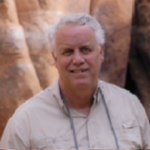
Professor, University of Colorado, Boulder
A New Seismotectonic Framework for Active Faults in Metropolitan San Diego
Abstract: Recognition of seismic hazards in densely urbanized cities is often hampered by pervasive destruction of subtle landforms and young sedimentary deposits that geologists use to identify and characterize active faults. We overcome this challenge by using circa 1953 air photos shot prior to urbanization (i.e. < 16% of current population) to create a 2m digital elevation model of metropolitan San Diego. We extract the elevation of stratigraphic contacts from published geologic maps and ~ 100 deep boreholes to create 3D structure contour maps of Pleistocene-Eocene strata to visualize fault related folds and active faults. We enhance the subtle record of recent faulting by vertical exaggeration, narrow color bars and appropriate illumination to increase the range of tonality of 3D images. These datasets define a major new fault system that connects the active La Nacion Fault Zone (LNFZ) and Salsipuedes faults with three, newly recognized fault segments extending from Poway to Ensenada. New segments include a right lateral fault that extends the LNFZ 23 km north to Poway on Miramar NAS from a small pull apart basin in Allied Gardens, an 8 km long normal fault and linkage along the US Border, and a 15+ km right lateral fault and splays in Imperial Beach. Scarps along the border mark the trace of an active listric normal fault, or detachment that extends north of University City. Folding of the hanging wall (i.e. a rollover) above the curved detachment forming the San Diego Bay pull apart basin. Surface expression of the rollover is best defined by the south tilted flight of marine terraces south of Mission Valley. Bending moment faults at the crest of the rollover form a classic axial graben (Mission Valley) marked by faceted spurs and an offset fluvial terrace. Rollover of Eocene and Pleistocene strata across Mission Valley and Pliocene fill suggests the LNFZ slips at less than 0.5 mm/yr. The Salsipuedes fault extends north from Tijuana into Imperial Beach and the Silver Strand forming pressure ridges and down to the east faults transtensional similar to those in San Diego Bay – a southward continuation of the Rose Canyon fault to Ensenada.
Bio: Karl Mueller is a Professor of Geology at the Department of Earth Science at the University of Colorado, Boulder. A native of San Diego, Karl first earned degrees in Geology at SDSU, working on active strike slip faults and pull apart basins in Baja California. Subsequent time in the oil industry included work on gravity driven extensional structures followed by a Ph.D. on extensional tectonics. Postdoctoral work was focused on determining how blind thrust earthquakes can be identified through study of active folds in California. His work also includes determining how and why regional uplift of marine terrace platforms occurs in coastal San Diego by mantle heating and rift flank uplift in the Gulf of California. Other projects included studies of active blind thrusts in Japan, the New Madrid seismic zone, while work in Taiwan explored how erosion rearranges active faulting in a thrust belt. Dr. Mueller is currently working on developing new techniques for identifying subtle, active faults in the densely urbanized landscape of San Diego and their implications for seismic hazards.
Mike Phipps, P.G., C.E.G.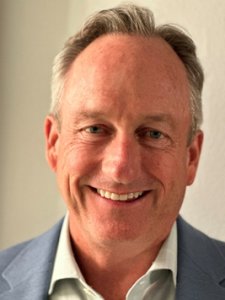
Principal Engineering Geologist, Cotton, Shires and Associates, Inc.
Fault Investigation Challenges and Issues In The Urban Setting of Santa Monica, California — A Reviewer’s Perspective
Abstract: TBD
Bio: Michael Phipps, P.G., C.E.G., is a Principal Engineering Geologist with Cotton, Shires and Associates, Inc. in Thousand Oaks, California. A Southern California native and 1987 graduate of the University of Southern California, Michael has spent the past 39 years gaining diverse technical, project management, operations management and executive experience in the geotechnical industry, predominantly in southern California. His technical expertise includes geotechnical evaluation and remediation of landslides and other geologic hazards, coastal hazard evaluation, fault hazard evaluation, engineering geological site characterization, technical/peer review for government agencies, and is a respected expert consultant/witness on litigation matters. Michael started his career working for former State Geologist and highly respected expert, the late Dr. James E. Slosson. During his 7+ years with Slosson & Associates he received a unique and well-rounded upbringing as an engineering geologist working on a variety of litigation support matters typically involving large landslides or distressed structures, performing peer review for several southern California cities, and observing large hillside mass-grading operations in a second-party role for a large residential developer in Los Angeles, Orange, Riverside, and San Diego counties. For the past two years he has been the lead engineering geological peer reviewer for emergency landslide stabilization measures for the 720-acre Greater Portuguese Bend Landslide Complex in Rancho Palos Verdes.
Over the course of his career, Michael has planned and completed multiple fault surface rupture hazard studies within the Simi-Santa Rosa Fault Zone, as well as studies on the Holser Fault, San Fernando Fault, and Stevenson Ranch zone of deformation. He has also peer reviewed over one hundred fault surface rupture hazard studies for proposed development projects in the cities of Santa Monica, Malibu, Palmdale, Simi Valley, and Moorpark, California. Michael has been a geotechnical peer reviewer for the City of Santa Monica since 2012, but more notably has been the reviewer of all fault studies conducted in the City since January 2018 when the Santa Monica Fault was zoned under the Alquist-Priolo Earthquake Fault Zoning Act.
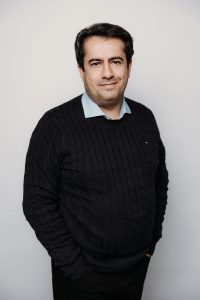
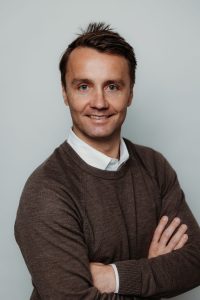 Chris Smith and Ehsan Dezhdar
Chris Smith and Ehsan Dezhdar
Glotman Simpson
Seismic Modelling + Performance of High-Rise Concrete Shear Wall Building Adjacent to Fault
Abstract: This study focuses on the seismic design and response of a new 37-story residential tower in San Diego, CA that sits directly adjacent to an active fault. Given the adjacent active fault, near-fault effects were extensively evaluated in the development of the ground motions and PBSD approach. GMs were developed with near-fault effects and the non-linear time history analyses (NLTHA) included simultaneous application of vertical and horizontal time series, in addition to, the permanent vertical ground displacements (VGD) associated with the fault rupture (i.e. fling-step). The ground displacement contour was idealized as a “tilting” or permanent rotation of the tower towards the fault. Fling-step studies were performed to assess whether the VGDs associated with the fling should be applied in a static vs. dynamic fashion. Results of these studies, the PBSD evaluation criteria and GMs for this near fault are discussed herein. Incorporating vertical ground motions in NLTHA is rarely done and it presents many challenges, including but no limited to: numerical convergence, additional degrees of freedom, significant processing times, and validation of analytical results is difficult. Ground displacement effects on building structures are sometimes explored in analytical models, but rarely in the context of a NLTHA. Approaches and techniques we developed to support these highly complex analyses are discussed herein, along with our analytical results. A comparison of structural responses with two-component (horizontal GMs) and three-component (horizontal + vertical GMs) is presented. Compared to the two-component GMs, the three-component GMs are shown to have negligible effects on building drift demands and associated structural responses (i.e. rotational demands on coupling beams and outriggers, core wall flexure, and shear demands, etc.). Vertical GMs were shown to have little effect on the core wall axial-strain demands but significant effects were observed on the column axial demands. Compared to the vertical seismic effects estimated from the empirical equations per LATBSDC, NEHRP, TBI, ASCE 7, etc., we found that the vertical GMs were generating vertical seismic axial demands in the columns that were 500% to 1,000% higher than those values. Techniques developed to evaluate the columns for these unprecedented demands are discussed herein, along with the results of that evaluation.
Bios: Chris Smith, a Partner at Glotman•Simpson, is a licensed Civil and Structural Engineer with expertise in code and performance based seismic design of all building types. Chris is known for his skill in managing structural challenges in high-risk regions. He provides third-party plan checks and seismic peer reviews for various entities including the City of Los Angeles, City of San Diego, California State University, and the University of California.
Dr. Ehsan Dezhdar is a Senior Associate at Glotman•Simpson with over 15 years of experience in structural engineering, specializing in reinforced concrete design, seismic risk assessment, and displacement-based seismic design. Drawing on his doctoral research—which focused on nonlinear time history analysis of high-rise concrete shear walls—Ehsan brings deep technical insight to the performance-based design of towers, particularly in high seismic regions like California.
Ehsan plays a key role in advancing innovative seismic solutions within our team, contributing to the design of resilient, code-exceeding buildings. He has presented his work at leading international conferences on earthquake engineering, reinforcing his commitment to bridging research and practice to better inform the built environment.
Nick Oettle, Ph.D., P.E., G.E.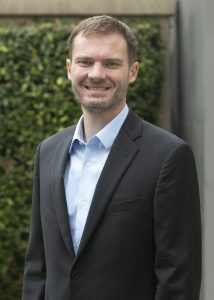
Senior Consultant, GEI Consultants, Inc.
Designing Infrastructure for Surface Fault Rupture
Abstract: Recent earthquakes have provided numerous examples of the effects of earthquake surface fault rupture on structures, including from the 2025 Myanmar Earthquake when the first video ever of surface fault rupture was recorded. Because of the often-unavoidable nature of surface faults, infrastructure must sometimes be constructed near surface faults. This presentation will focus on the latest developments in designing infrastructure for surface fault rupture. Included will be observations from actual surface fault rupture effects on infrastructure, mitigation strategies for designing against surface fault rupture, and numerical modeling analysis techniques that have been recently developed and validated with centrifuge testing. Typical requirements for buildings and dams will be presented, including recommendations from a newly formed working group on incorporating surface fault rupture requirements into the building code.
Bio: Nick Oettle is a Senior Consultant with 18 years of experience in geotechnical earthquake engineering. His project experience includes managing large dam and water infrastructure projects, focusing on earthquake engineering, seismic risk, and numerical modeling. Nick has been involved with the USSD earthquakes committee, the development of ASCE 7-22 and 7-28, traveled to Japan as a member of the GEER reconnaissance team for the 2016 Kumamoto Earthquake, and has authored over 30 technical publications. He earned his Ph.D. in Geotechnical Earthquake Engineering from UC Berkeley developing numerical modeling techniques for surface fault rupture interaction with structures. Recently, he has led a working group to add surface fault rupture provisions to the building code.
7th Kenji Ishihara Colloquium Series on Earthquake Engineering | Day 2
One-Day Short Course
Dr. Rui Chen, California Geological Survey
Alexandra Sarmiento, P.E., P.G., CEG | GeoPentech, Inc.; University of California, Los Angeles
Dr. Stephen Thompson, Lettis Consultants International, Inc.
Friday, August 22nd, 2025, 8:30am-3:30pm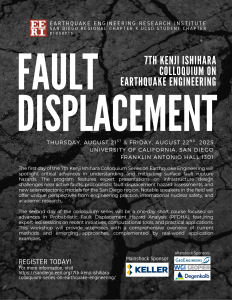
University of California, San Diego
Franklin Antonio Hall 1301
The second day of the 7th Kenji Ishihara Colloquium Series on Earthquake Engineering, cohosted with EERI UCSD, will be a workshop focused on advances in Probabilistic Fault Displacement Hazard Analysis (PFDHA), featuring expert-led sessions on recent initiatives, computational tools, and practical applications. Presentations provide attendees with a comprehensive overview of current methods and emerging approaches, complemented by real-world application examples.
Click the image on the right to view the event flyer.
Click here to go to Day 1 of the 7th Kenji Ishihara Colloquium Series.
ABSTRACTS
Fault Displacement Hazard Initiative (FDHI) Program Overview, Scenario-Based FDHA Computational Tools
Alexandra Sarmiento and Yousef Bozorgnia
The Fault Displacement Hazard Initiative (FDHI) Project is a community-based research program that was established to advance the state-of-practice in fault displacement hazard analysis (FDHA). Toward this end, a comprehensive and standardized database of fault displacement measurements, surface rupture maps, and supporting information from 75 historical, surface-rupturing earthquakes was created. Four new fault displacement models (FDMs) providing probability distributions for surface fault displacement were developed using the new database. The results from this first phase of the FDHI Project are published in Earthquake Spectra‘s “Fault Displacement Hazard Analysis Special Collection.” The new models are implemented in a publicly available Python package and Excel workbook.
Probabilistic Fault Displacement Hazard Analysis (PFDHA) – An Overview
Dr. Rui Chen
Fault displacement hazard analysis (FDHA) provides quantitative estimates of surface fault displacement from future earthquakes —critical for the safe design of infrastructure that crosses or lies near active faults. This presentation reviews the fundamentals of FDHA and briefly compares its two primary methodologies: deterministic FDHA and probabilistic FDHA (PFDHA). The focus of this presentation is on PFDHA, which extends the methodology of probabilistic seismic hazard analysis by replacing ground motion models with fault displacement models and incorporating additional probabilistic elements to account for the occurrence of surface rupture (i.e., the earthquake approach). Key components of the PFDHA framework are outlined, and their integration is demonstrated through an open-access Fortran implementation, accompanied by example results. While the presentation centers on principal displacement, distributed displacement is also briefly discussed. The talk further highlights evolving building code requirements, emerging national and international guidance, and ongoing research efforts to advance PFDHA.
Fault Displacement Hazard Analysis Example Applications
Dr. Stephen Thompson
This talk will review key components of fault displacement hazard analysis for the evaluation of design and/or seismic safety of various types of infrastructure, including both lifelines (gas and water pipelines, rail lines) and structures with fixed footprints (dams, buildings). Uncertainty in the location of active faults has been and will continue to be the most vital part of the hazard assessment for most projects. Aside from the mantra of location, location, location, the talk will provide a series of example applications for both principal and distributed displacement hazard that will discuss the implementation of published models for PFDHA, common mistakes or misconceptions we have observed, which model components dominate the uncertainty in hazard, and how logic trees can (and should) incorporate epistemic uncertainties that go beyond the currently available published models. The talk will also provide some suggestions—and hopefully generate some discussion—about how to communicate the results of a PFDHA to aid in decision making.
MEET THE INSTRUCTORS
Dr. Rui Chen
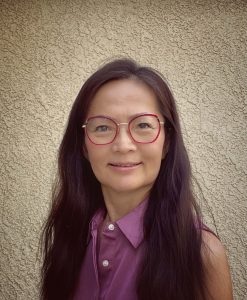 Rui Chen is a Senior Seismologist with the California Geological Survey (CGS), where she has served since 2008. Her expertise includes ground motion hazard analysis to support CGS’ regulatory liquefaction and earthquake induced landslide hazard mapping program, as well as the review of geotechnical investigations for critical facilities such as hospitals, schools, and nuclear installations. She conducts research on probabilistic fault displacement hazard analysis, including the development of fault displacement and rupture probability models. She also contributes to statewide earthquake shaking potential maps and earthquake loss estimation for California. Rui Chen holds a Ph.D. in Civil and Geological Engineering from the University of Manitoba, Canada, and M.S. and B.S. degrees in earthquake sciences from institutions in China. She is a licensed Professional Engineering Geologist in California and has over three decades of experience in academia, consulting, and applied geosciences.
Rui Chen is a Senior Seismologist with the California Geological Survey (CGS), where she has served since 2008. Her expertise includes ground motion hazard analysis to support CGS’ regulatory liquefaction and earthquake induced landslide hazard mapping program, as well as the review of geotechnical investigations for critical facilities such as hospitals, schools, and nuclear installations. She conducts research on probabilistic fault displacement hazard analysis, including the development of fault displacement and rupture probability models. She also contributes to statewide earthquake shaking potential maps and earthquake loss estimation for California. Rui Chen holds a Ph.D. in Civil and Geological Engineering from the University of Manitoba, Canada, and M.S. and B.S. degrees in earthquake sciences from institutions in China. She is a licensed Professional Engineering Geologist in California and has over three decades of experience in academia, consulting, and applied geosciences.
Alexandra Sarmiento
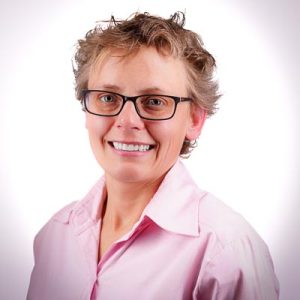 Alexandra Sarmiento is a seismic hazard analyst at GeoPentech, Inc. and a researcher at the University of California, Los Angeles (UCLA) with 15 years of experience in consulting practice and academia. Her expertise includes seismic source characterization, ground motion hazard analysis, ground motion development, and fault rupture and displacement hazard analysis. Alexandra is part of the Fault Displacement Hazard Initiative (FDHI) research project at UCLA, where she led the development of a new, high-quality database of mapped surface ruptures and fault displacement measurements. She also led a comprehensive technical comparison of new and existing fault displacement models. Alexandra has B.S. and M.S. degrees in Geological Engineering and Geology, respectively, from the University of Nevada, Reno and is registered in California as a Professional Engineer, Professional Geologist, and Certified Engineering Geologist.
Alexandra Sarmiento is a seismic hazard analyst at GeoPentech, Inc. and a researcher at the University of California, Los Angeles (UCLA) with 15 years of experience in consulting practice and academia. Her expertise includes seismic source characterization, ground motion hazard analysis, ground motion development, and fault rupture and displacement hazard analysis. Alexandra is part of the Fault Displacement Hazard Initiative (FDHI) research project at UCLA, where she led the development of a new, high-quality database of mapped surface ruptures and fault displacement measurements. She also led a comprehensive technical comparison of new and existing fault displacement models. Alexandra has B.S. and M.S. degrees in Geological Engineering and Geology, respectively, from the University of Nevada, Reno and is registered in California as a Professional Engineer, Professional Geologist, and Certified Engineering Geologist.
Dr. Stephen Thompson
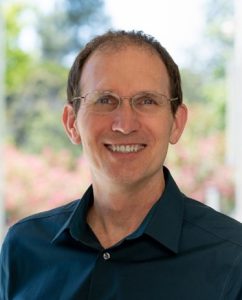 Stephen Thompson is a Senior Principal Engineering Geologist at Lettis Consultants International, Inc. (LCI) where he specializes in the characterization of active faults for hazard evaluation. Since completing his PhD in Geological Sciences at the University of Washington in 2001, Steve has been trying to provide clients and colleagues with useful information to help quantify and mitigate the hazards of surface-fault rupture and strong ground shaking. Steve spends much of his time trying not to be overwhelmed by the uncertainties—real and imagined—involved in fault source characterization for seismic hazard analysis (PSHA and DSHA) and fault displacement hazard analysis (PFDHA and DFDHA). Being able to effectively communicate with engineers keeps him up at night.
Stephen Thompson is a Senior Principal Engineering Geologist at Lettis Consultants International, Inc. (LCI) where he specializes in the characterization of active faults for hazard evaluation. Since completing his PhD in Geological Sciences at the University of Washington in 2001, Steve has been trying to provide clients and colleagues with useful information to help quantify and mitigate the hazards of surface-fault rupture and strong ground shaking. Steve spends much of his time trying not to be overwhelmed by the uncertainties—real and imagined—involved in fault source characterization for seismic hazard analysis (PSHA and DSHA) and fault displacement hazard analysis (PFDHA and DFDHA). Being able to effectively communicate with engineers keeps him up at night.
PROGRAM
Moderator: Taylor M. Gater, P.E. | GeoEngineers, Inc. || EERI San Diego Chapter Director of Events
| Time | Topic & Speaker | |
|---|---|---|
| 7:30am | 8:30am | Registration and Breakfast |
| 8:30am | 8:35am | Welcome and Overview of Program |
| 8:35am | 9:35am | (P)FDHA Overview Dr. Rui Chen | California Geological Survey |
| 9:35am | 9:45am | Break |
| 9:45am | 10:45am | Fault Displacement Hazard Initiative (FDHI) Program Overview Alexandra Sarmiento, P.E., P.G., C.E.G. | GeoPentech, Inc.; University of California, Los Angeles |
| 10:45am | 11:00am | Break |
| 11:00am | 11:45am | Scenario-Based FDHA Computational Tools Alexandra Sarmiento, P.E., P.G., C.E.G. | GeoPentech, Inc.; University of California, Los Angeles |
| 11:45am | 12:45pm | Lunch |
| 12:45pm | 2:15pm | FDHA Example Applications Dr. Stephen Thompson | Lettis Consultants International, Inc. |
| 2:15pm | 2:45pm | Discussion and Colloquium Wrap-Up |
VENUE
University of California, San Diego
Franklin Antonio Hall 1301
3180 Voigt Drive
La Jolla, CA 92093
REGISTRATION
Click here to register for the colloquium. Registration closes on Monday 8/18 at 11:59pm.
LODGING
Click here for a list of hotels near UCSD.
PARKING
For $8 per day, conference parking permits are available in advance through UCSD’s Parking Portal website, which you can access by clicking here. In order to purchase a parking permit, you will need to create an account. When you click on the aforementioned link, it should show a “Guest User Registration” form. Otherwise, click on “SIGNUP” in the upper right corner of the webpage. Once you fill out the form and create an account, follow the prompts to purchase your conference parking permit for the days you will be attending the colloquium.
You can also pay for parking through the ParkMobile app or website the day-of the colloquium. More information can be found here.
There are two structures available for parking near Franklin Antonio Hall: Hopkins and Pangea. The closest parking structure to the venue is Hopkins Parking Structure (view here or here), located on Voigt Dr. off of Hopkins Dr. If Hopkins is full, please go to Pangea Parking Structure (view here or here), located on Pangea Dr. off of N. Torrey Pines Rd. You may only park in B-spaces with your pre-purchased conference parking permit.
Click image below to see the parking structures and venue highlighted (from https://maps.ucsd.edu/map/default.htm):
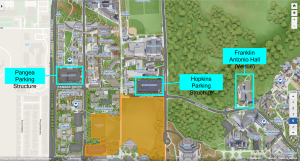
Click image below to see the parking structures and venue highlighted on Google Maps (from https://act.ucsd.edu/maps/):
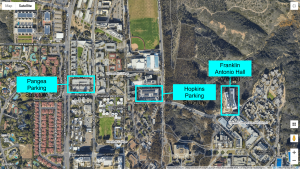
7th Kenji Ishihara Colloquium Series on Earthquake Engineering | Day 1
Fault Displacement
Thursday, August 21st, 2025, 8:30am-5pm
University of California, San Diego
Franklin Antonio Hall 1301
The first day of the 7th Kenji Ishihara Colloquium Series on Earthquake Engineering, cohosted with EERI UCSD, will spotlight critical advances in understanding and mitigating surface fault rupture hazards. The program features expert presentations on infrastructure design challenges near active faults, probabilistic fault displacement hazard assessments, and new seismotectonic models for the San Diego region. Notable speakers in the field will offer unique perspectives from engineering practice, international nuclear safety, and academic research.
Click the image on the right to view the event flyer.
Click here for information about each of our speakers & their presentations.
Click here to go to Day 2 of the 7th Kenji Ishihara Colloquium Series.
PROGRAM
Morning Session - Moderator: Janna Bonfiglio, P.E., G.E. | Kleinfelder || EERI San Diego Chapter President
| Time | Topic & Speaker | |
|---|---|---|
| 7:30am | 8:30am | Registration and Breakfast |
| 8:30am | 8:35am | Welcome and Overview of Program |
| 8:35am | 9:15am | Designing Infrastructure for Surface Fault Rupture Nick Oettle, Ph.D., P.E., G.E. | GEI Consultants, Inc. |
| 9:15am | 9:45am | The IAEA Probabilistic Fault Displacement Hazard Assessment Exercise Zeynep Gulerce | International Atomic Energy Agency |
| 9:45am | 10:00am | Break |
| 10:00am | 10:30am | Selection of Design Fault Displacements for Moderate-Activity Faults Dr. Norman Abrahamson | UC Berkeley, UC Davis |
| 10:30am | 10:50am | Discussion |
| 10:50am | 11:20am | A New Seismotectonic Framework for Active Faults in Metropolitan San Diego Dr. Karl Mueller | University of Colorado Boulder |
| 11:20am | 11:50am | The Resolution of Two Important Questions About the Nature of the San Andreas Fault Dr. Monte Marshall | San Diego State University |
| 11:50am | 12:15pm | Discussion |
| 12:15pm | 1:15pm | Lunch |
Unfortunately, Dr. Craig Comartin is no longer able to present at this year’s colloquium.
Afternoon Session - Moderator: Jalal Fatemi, P.E. | Atlas || EERI San Diego Chapter Secretary/Treasurer
| Time | Topic & Speaker | |
|---|---|---|
| 1:15pm | 1:45pm | Design and Construction of the Light Rail Transit Overhead Crossing Seismic Fault Zones Sami Megally, Ph.D., P.E., S.E. and Keith Gazaway, P.E. | Kleinfelder |
| 1:45pm | 2:15pm | Evaluation of Existing Buildings Located on Active Fault Lines Frank Bannon | Reid Middleton, Inc. |
| 2:15pm | 2:30pm | Break |
| 2:30pm | 3:00pm | Seismic Modelling + Performance of High-Rise Concrete Shear Wall Building Adjacent to Fault Chris Smith, P.E., S.E. and Dr. Ehsan Dezhdar, S.E. | Glotman Simpson |
| 3:00pm | 3:20pm | Discussion |
| 3:20pm | 3:50pm | Fault Investigation Challenges and Issues In The Urban Setting of Santa Monica, California -- A Reviewer's Perspective Mike Phipps | Cotton, Shires and Associates, Inc. |
| 3:50pm | 4:20pm | Experience Using Ground Improvement for Surface Fault Rupture Hazard Mitigation Jim Gingery | Keller |
| 4:20pm | 4:40pm | Discussion |
| 4:40pm | 5:00pm | Break |
| 5:00pm | 7:00pm | Happy Hour |
VENUE
University of California, San Diego
Franklin Antonio Hall 1301
3180 Voigt Drive
La Jolla, CA 92093
REGISTRATION
Click here to register for the colloquium. Registration closes on Monday 8/18 at 11:59pm.
LODGING
Click here for a list of hotels near UCSD.
PARKING
For $8 per day, conference parking permits are available in advance through UCSD’s Parking Portal website, which you can access by clicking here. In order to purchase a parking permit, you will need to create an account. When you click on the aforementioned link, it should show a “Guest User Registration” form. Otherwise, click on “SIGNUP” in the upper right corner of the webpage. Once you fill out the form and create an account, follow the prompts to purchase your conference parking permit for the days you will be attending the colloquium.
You can also pay for parking through the ParkMobile app or website the day-of the colloquium. More information can be found here.
There are two structures available for parking near Franklin Antonio Hall: Hopkins and Pangea. The closest parking structure to the venue is Hopkins Parking Structure (view here or here), located on Voigt Dr. off of Hopkins Dr. If Hopkins is full, please go to Pangea Parking Structure (view here or here), located on Pangea Dr. off of N. Torrey Pines Rd. You may only park in B-spaces with your pre-purchased conference parking permit.
Click image below to see the parking structures and venue highlighted (from https://maps.ucsd.edu/map/default.htm):

Click image below to see the parking structures and venue highlighted on Google Maps (from https://act.ucsd.edu/maps/):

June 2025 Webinar
ISSUES ASSOCIATED WITH SIMPLIFIED PROCEDURES TO EVALUATE LIQUEFACTION TRIGGERING AND CONSEQUENCES
Wednesday, June 18th, 2025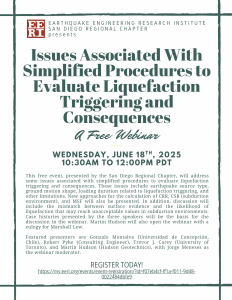
10:30am-12pm PDT
Virtual Event
This free webinar, presented by the San Diego Regional Chapter, will address some issues associated with simplified procedures to evaluate liquefaction triggering and consequences. These issues include earthquake source type, ground motion shape, loading duration related to liquefaction triggering, and other limitations. New approaches for the calculation of CRR, CSR (subduction environment) and MSF will also be presented. In addition, discussion will include the mismatch between surface evidence and the likelihood of liquefaction that may reach unacceptable values in subduction environments. Case histories presented by the three speakers will be the basis for the discussion in the webinar. Martin Hudson will also open the webinar with an eulogy for Marshall Lew.
Click the image to the right to view the event flyer.
REGISTRATION
Click here to register for the webinar. You do not need to be an EERI member to attend.
SPEAKERS
- Gonzalo Montalva, Universidad de Concepción, Chile; Liquefaction Triggering in Subduction Zones
- Robert Pyke, Consulting Engineer; The Limitations of Simplified Methods for Evaluating Earthquake-Induced Liquefaction and its Consequences
- Trevor J. Carey, University of Toronto; Toward Improved Magnitude Scaling in the Simplified Liquefaction Triggering Procedures
- Martin Hudson, Hudson Geotechnics
- Jorge Meneses, moderator
ASCE EERI September 2024 Joint Dinner Meeting
MEETING GEOSPATIAL TECHNOLOGY – SAVING THE WORLD’S PAST, PRESENT, AND FUTURE FROM NATURAL HAZARDS
Wednesday, September 11th, 2024
6pm-9pm
Stone Brewing Liberty Station
2816 Historic Decatur Road, Unit 116
San Diego, CA 92106
ASCE San Diego Section is co-hosting their September Meeting with EERI, featuring guest speaker Dr. Michael Olsen, 2024 EERI Distinguished Lecturer. Please join us at Stone Brewing to hear about the role of geospatial technologies in infrastructure resilience amidst natural hazards.
For members of EERI or ASCE = $40
For non-members = $50
For student members of EERI or ASCE = $30
For student non-members of EERI or ASCE = $40
Click the image to the right to view the event flyer.
REGISTRATION
Click here to register for the dinner.
Abstract
The task of maintaining resilient infrastructure against the onslaught of natural hazards often feels elusive and unattainable. Recent advances in technology offer promising solutions and opportunities towards this goal; however, the effective adoption and utilization of those technologies operates at a much slower pace given the societal realities of budget limitations, workforce shortages, polarization of priorities, disillusionment from past failures, and resistance to change. In day to day operations, efforts by engineers, planners, and decision makers often are stymied due to a lack of accessible, trustworthy, and current information related to infrastructure conditions. These problems are exacerbated in emergency situations where infrastructure systems and people are pushed to extreme limits.
At the project scale, inadequate site investigations result in substantial delays and cost-overruns from unanticipated problems during construction as well as poor infrastructure performance due to ground failure during a seismic event. These challenges propagate to the network scale where entities managing lifelines are often forced to make decisions prioritizing mitigation efforts based on limited, simplistic, or outdated information, which significantly hampers response and recovery efforts during a disastrous situation. This presentation explores examples of how expanded and effective usage of geospatial technologies now can help us proactively “save” the world through detailed mapping of our critical lifeline infrastructure to improve 1) monitoring, modeling, and analysis efforts to more precisely identify vulnerable infrastructure, 2) planning for and understanding the potential impacts and damage extents associated with multiple hazards, 3) the conduct of post-disaster reconnaissance, damage assessments, and rebuilding efforts, and 4) digital preservation of infrastructure and other resources with significant cultural and historical importance that are unlikely to withstand major seismic forces lurking on the horizon. Ultimately, geospatial technology serves as the unifying glue to enable meaningful collaboration between science, engineering, and public policy necessary for a resilient society capable of effectively responding and adapting to natural hazards.
Speaker Information: 6th Kenji Ishihara Colloquium Series on Earthquake Engineering
Punctuated Resilience, Climate Change and Bio-Geotechnics
Speakers and Abstracts
Alejandro Martinez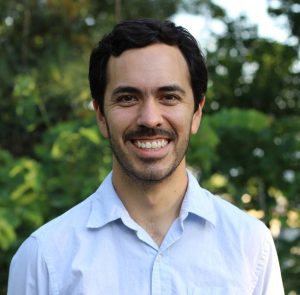
Associate Professor, University of California, Davis
Snakeskin-inspired piles and soil anchors: from bio-inspiration to field implementation
Abstract: Many aspects of the construction and performance of infrastructure rely on load transfer between soils and structures. Examples include deep foundations, soil anchors, and geosynthetics. This presentation will highlight the application of bioinspiration towards the transfer of load at soil-structure interfaces, with an emphasis on piled foundations and soil anchors. A dilemma in design exists: while large skin friction promotes a large capacity, it can also lead to difficulties during installation (i.e. refusal). To address this, surfaces with textures inspired by the belly scales of snakes were designed to assess the potential for mobilizing direction-dependent friction, and centrifuge and field load tests were performed to assess their effect the shaft capacity of piles and soil anchors. The laboratory, centrifuge, and field results reveal that greater skin friction is mobilized when the surfaces and piles are displaced in the cranial direction (i.e. soil moving against asperities) than when they are displaced in the caudal direction (i.e. soil moving along asperities). This direction-dependence is shown to be due to the greater soil deformation induced when the surfaces are displaced in the cranial direction. Cyclic interface shear tests and centrifuge load tests inform the degradation of skin friction mobilized by the bioinspired surfaces and piles. This presentation will discuss the potential benefits of the snakeskin-inspired surfaces in sites with sandy and clayey soils.
Bio: Alejandro Martinez is an associate professor at the University of California Davis. He obtained his Ph.D. and M.S. degrees from Georgia Tech in 2015 and 2012, respectively, and his B.S. from the University of Texas at Austin in 2010. His research aims to further the understanding of soil behavior and soil-inclusion interactions involved in geotechnical engineering. His research interests include bio-inspired geotechnics, soil-structure interactions, offshore geotechnics, and fabric effects on soil behavior. His research employs a combination of experimental laboratory, centrifuge modeling, and numerical techniques. In 2020, he received the NSF CAREER award and in 2022 he received the ASCE Arthur Casagrande Career Development Award.
Thomas O’Rourke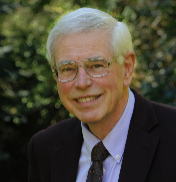
Thomas R. Briggs Professor of Engineering Emeritus, School of Civil and Environmental Engineering, Cornell University
Punctuated Resilience
Abstract: The concept of punctuated equilibrium, as advanced by Stephen Jay Gould and Niles Eldredge, is applied to infrastructure in this presentation. Professor O’Rourke will discuss how key infrastructure policies have been punctuated by hazards that affect the built environment. Just as the fossil record is composed of flash pictures that imply catastrophic change, so the record of hazards can provide a similar impression. Hazards that occurred once every generation, now occur almost yearly. Professor O’Rourke will explore how frequent hazards, such as hurricanes, affect resilience, and become a mechanism for improving the engineering and management of critical facilities. The agents of change that lead to improved policies and approaches are explored, including new technologies and the engagement of community support.
Bio: Tom O’Rourke is the Thomas R. Briggs Professor of Engineering Emeritus in the School of Civil and Environmental Engineering at Cornell University. He is a member of the US National Academy of Engineering, Distinguished Member of ASCE, International Fellow of the Royal Academy of Engineering, Member of the Mexican Academy of Engineering, and a Fellow of the American Association for the Advancement of Science. He authored or co-authored over 440 technical publications, and has received numerous awards for his research. His interests cover geotechnical engineering, earthquake engineering, underground construction technologies, engineering for large, geographically distributed systems, and geographic information technologies and database management.
J. Carlos Santamarina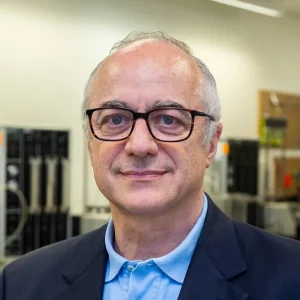
Professor & G. Wayne Clough Chair, Georgia Institute of Technology
The Energy-Climate-Livability Challenge: New Roles for the Earthquake Engineering Community
Abstract: Climate change is rapidly emerging as a significant threat to daily life, with profound implications for livability and the infrastructure. Caused by our reliance on fossil fuels, climate change affects water and food security, urban development, migration and consumption patterns, and policy at both national and international levels. The multifaceted consequences of the energy-climate-livability challenge are already testing vulnerabilities across all sectors, disproportionately affecting the most susceptible populations. The earthquake engineering community has a role to play in addressing these evolving challenges. Key areas include the seismic design of new and retrofitted civil infrastructure, the reimagined transportation systems, new onshore and offshore energy infrastructure (wind, solar, and storage systems – ranging from household to grid-scale), and mining operations for critical minerals essential for the energy transition. Special attention should be given to seismicity induced by energy projects (geothermal and hydraulic fracturing for oil and gas) and the interaction between more frequent extreme climatic events and seismic activity (e.g., more pronounced debris flows). Furthermore, the earthquake engineering community’s expertise with cyclic loading can be extended to the analysis of energy infrastructure subjected to low-amplitude repetitive loads, including storage systems, wind turbines, and thermally active components.
Bio: J. Carlos Santamarina (Professor and Clough Chair, Georgia Tech) earned his bachelor’s degree from the Universidad Nacional de Córdoba and completed graduate studies at the University of Maryland and Purdue University. Throughout his career, he has taught at NYU-Poly, the University of Waterloo, and King Abdullah University of Science and Technology. His research team utilizes a combination of experimental and numerical methods to investigate geomaterials (sediments, fractured rocks, and complex fluids) within the context of energy geo-science and engineering, from resource recovery to energy and waste geostorage. He delivered the50th Terzaghi Lecture on Energy Geotechnology and is a member of both Argentinean National Academies.
Christopher Wills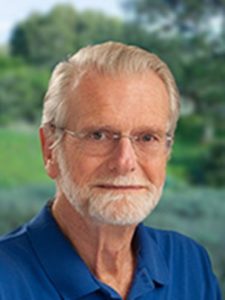
Professor Emeritus, University of California, San Diego
Punctuated Equilibrium and How It Works
Abstract: In 1972, Niles Eldredge and Stephen Jay Gould introduced the term “punctuated equilibrium” to describe the bursts of evolution that follow sudden major changes in the Earth’s environment, and the long periods of relative stasis that lay between these giant events. Now, we realize that many groups of organisms have managed to survive even the severest punctuations, and that waves of extinction have taken place even during periods of slower evolutionary change. Major extinction events do put severe stress on the entire biosphere, but we will see how Darwinian evolution enables life to recover from these stresses. The powerful process of evolution often takes life in new directions even without the aid of giant environmental disasters.
Bio: Born in England, Christopher Wills grew up in Canada. From1972 until his retirement in 2010 he was associate and full professor of biology at the University of California, San Diego. He was the first to deliberately select for genetic variants in enzymes. He has explored the roles of genetic recombination in the maintenance of genetic variation in Drosophila and yeast, and the role of microsatellite DNA variation in the evolution of diseases and the evolution of our species. Most recently, he has organized a large group of ecologists from around the world to apply new analytical methods to the forces that are maintaining variation in complex ecosystems such as rainforests and coral reefs. He has written nine books for the general public on evolution and ecology, the most recent being “Why Ecosystems Matter” (Oxford University press, 2024). In 1999, he received the Award for Public Understanding of Science and Technology from the American Association for the Advancement of Science.
6th Kenji Ishihara Colloquium Series on Earthquake Engineering
USGS Software Tools for Site-Specific Ground Motion Hazard Analysis
A Three-Quarter Day Short Course
Nicolas Luco, Supervisory Research Structural Engineer, U.S. Geological Survey
Peter Powers, Research Geophysicist, U.S. Geological Survey
Jorge F. Meneses, Senior Principal Geotechnical Engineer, Worley Consulting
Friday, September 13th, 2024, 8am-2:30pm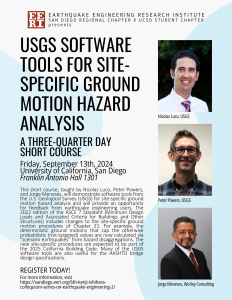
University of California, San Diego
Franklin Antonio Hall 1301
This short course will demonstrate software tools from the U.S. Geological Survey (USGS) for site-specific ground motion hazard analysis and will provide an opportunity for feedback from earthquake engineering users. The 2022 edition of the ASCE 7 Standard (Minimum Design Loads and Associated Criteria for Buildings and Other Structures) includes changes to the site-specific ground motion procedures of Chapter 21. For example, the deterministic ground motions that cap the otherwise probabilistic (risk-targeted) values are now calculated via “scenario earthquakes” from hazard disaggregations. The new site-specific procedures are expected to be part of the 2025 California Building Code. Many of the USGS software tools are also useful for the AASHTO bridge design specifications.
MEET THE INSTRUCTORS
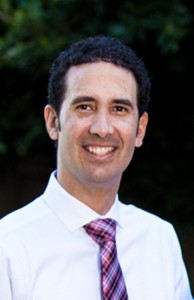
Dr. Nicolas Luco
Nico is a Supervisory Research Civil Engineer with the U.S. Geological Survey (USGS) at its Geologic Hazards Science Center in Golden, Colorado. There he serves as the Project Lead for the National Seismic Hazard Model, as of 2024. He also serves as a USGS Liaison on numerous external engineering committees that develop the seismic provisions of U.S. building codes, including the American Society of Civil Engineers (ASCE) Seismic Subcommittees for the ASCE 7 and 41 Standards. Prior to joining the USGS in 2004, he was a Senior Analysis Engineer with the insurance risk modeling company AIR Worldwide Corporation. He earned his PhD and BS in civil/structural engineering, and an MS in statistics, from Stanford University; his MS in civil/structural engineering is from the University of California, Berkeley.
Dr. Peter Powers
Peter Powers is a research and development geophysicist at the U.S. Geological Survey. Peter started his career as a geologist and worked in both the mining and tech sectors before attending the University of Southern California, from which he received a PhD in geophysics and seismology. He began his time at the USGS in 2008 as a Global Earthquake Model (GEM) post-doc and developer of OpenSHA and the Uniform California Earthquake Rupture Forecast version 3 (UCERF3). He now develops software and tools to support updates to USGS national hazard models and related research.
Dr. Jorge F. Meneses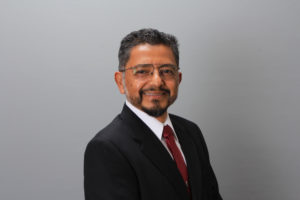
Dr. Jorge F. Meneses is a Senior Principal Geotechnical Engineer with Worley Consulting and has more than 30 years of consultancy, project management, research, and teaching experience, in both private industry and research institutions in the field of geotechnical and earthquake engineering. He has been involved in numerous projects serving as a technical lead in geotechnical earthquake engineering and foundation engineering across the country and various markets including water, nuclear, transportation, high rise buildings, energy, schools, hospitals, commercial and industrial. Dr. Meneses frequently acts as a peer reviewer for technical conferences and technical journal publications, is a guest speaker for domestic and international conferences, and has published more than 60 technical publications. He is currently a part-time faculty member in the graduate school of San Diego State University. He was the President and Founder of the Earthquake Engineering Research Institute (EERI) San Diego Chapter, California Seismic Safety Commissioner, Member of the EERI Board of Directors, Honorary Chair of the ASCE Geo-Institute San Diego Chapter, ex-Member of the ASCE 7-16 (Minimum Design Loads for Buildings and Other Structures), member of the ASCE 1 (Geotechnical Analysis, Design, Construction, Inspection and Monitoring of Nuclear Safety-Related Structures) and ASCE 7-28 Committees, member of the Academy of Geo-Professionals, member of the Academy of Geo-Professionals, and a Fellow of the American Society of Civil Engineers (ASCE).
PROGRAM
| Time | Topic/Speaker | |
|---|---|---|
| 8:00am | 9:00am | Registration and Breakfast |
| 9:00am | 9:15am | Welcome and Overview of Program |
| 9:15am | 9:45am | ASCE 7-22 Chapter 21 Site-Specific Ground Motion Procedures Jorge F. Meneses |
| 9:45am | 10:30am | USGS Application of Site-Specific Procedures for ASCE 7-22 Chapter 22 Ground Motion Maps Nicolas Luco |
| 10:30am | 10:45am | Break |
| 10:45am | 11:30am | Site-Specific Hazard Curves from USGS Earthquake Hazard Toolbox Peter Powers |
| 11:30am | 12:00pm | Updated USGS Risk-Targeted Ground Motion Calculator Nicolas Luco |
| 12:00pm | 1:00pm | Lunch |
| 1:00pm | 1:30pm | Site-Specific Disaggregations from USGS Earthquake Hazard Toolbox Peter Powers |
| 1:30pm | 2:00pm | Deterministic Response Spectra from USGS Earthquake Hazard Toolbox Peter Powers |
| 2:00pm | 2:30pm | Other Current and Future USGS Software Tools Peter Powers and Nicolas Luco |
VENUE
University of California, San Diego
Franklin Antonio Hall 1301
3180 Voigt Drive
La Jolla, CA 92093
REGISTRATION
Click here to register for the short course.
LODGING
Click here for a list of hotels near UCSD.
PARKING
There are two structures available for parking near Franklin Antonio Hall: Hopkins and Pangea. The closest parking structure to the venue is Hopkins Parking Structure (view here or here), located on Voigt Dr. off of Hopkins Dr. Please park on Level 7 (top floor – Parking Lot P347) where there are 92 visitor parking spaces. No other levels have visitor parking.
If Hopkins is full, please go to Pangea Parking Structure (view here or here), located on Pangea Dr. off of N. Torrey Pines Rd. Please park on Level 6 (top floor – Parking Lot P376) where there are 100 visitor parking spaces. The 5th floor only has 9 visitor parking spaces.
Parking can be paid for at a pay station within the structure, or through the ParkMobile app or website. More information can be found here.
Click image below to see the parking structures and venue highlighted (from https://maps.ucsd.edu/map/default.htm):

Click image below to see the parking structures and venue highlighted on Google Maps (from https://act.ucsd.edu/maps/):

6th Kenji Ishihara Colloquium Series on Earthquake Engineering
Punctuated Resilience, Climate Change, and Bio-Geotechnics | Next-Generation Liquefaction Modeling of Liquefaction Triggering and Surface Manifestation
Thursday, September 12th, 2024, 8am-5pm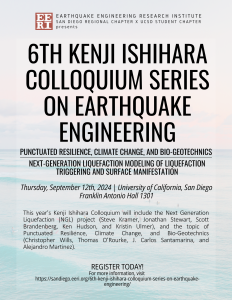
University of California, San Diego
Franklin Antonio Hall 1301
This year’s Kenji Ishihara Colloquium will include the Next Generation Liquefaction (NGL) project (Steve Kramer, Jonathan Stewart, Scott Brandenberg, Ken Hudson, and Kristin Ulmer) and the topic of Punctuated Resilience, Climate Change, and Bio-Geotechnics (Christopher Wills, Thomas O’Rourke, J. Carlos Santamarina, and Alejandro Martinez).
PROGRAM
Session 1: Punctuated Resilience, Climate Change, and Bio-Geotechnics
| 8:00am | 9:00am | Registration and Breakfast |
| 9:00am | 9:05am | Welcome and Overview of Program |
| 9:05am | 9:35am | Punctuated Equilibrium and How It Works Christopher Wills |
| 9:35am | 10:05am | Punctuated Resilience Thomas O'Rourke |
| 10:05am | 10:25am | Discussion |
| 10:25am | 10:40am | Break |
| 10:40am | 11:10am | Snakeskin-inspired piles and soil anchors: from bio-inspiration to field implementation Alejandro Martinez |
| 11:10am | 11:40am | The Energy-Climate-Livability Challenge: New Roles for the Earthquake Engineering Community J. Carlos Santamarina |
| 11:40am | 12:00pm | Discussion |
| 12:00pm | 1:00pm | Lunch |
Session 2: Next-Generation Liquefaction Modeling of Liquefaction Triggering and Surface Manifestation
| 1:00pm | 1:15pm | Project Overview and Database Overview John Stamatakos, Jonathan Stewart |
| 1:15pm | 1:40pm | Model Development Philosophy - Bayesian Framework Steven Kramer (Video) |
| 1:40pm | 2:05pm | Laboratory-Based Triggering Model Kristin Ulmer |
| 2:05pm | 2:30pm | Discussion |
| 2:30pm | 2:45pm | Break |
| 2:45pm | 3:20pm | Case History Processing Kenneth Hudson |
| 3:20pm | 3:45pm | Critique of Critical Layer Approach to Model Development Jonathan Stewart |
| 3:45pm | 4:00pm | Profile-Based Model Development Approach Scott Brandenberg |
| 4:00pm | 4:35pm | Proposed Manifestation and Triggering Models Kenneth Hudson |
| 4:35pm | 5:00pm | Discussion |
VENUE
University of California, San Diego
Franklin Antonio Hall 1301
3180 Voigt Drive
La Jolla, CA 92093
REGISTRATION
Click here to register for the colloquium.
LODGING
Click here for a list of hotels near UCSD.
PARKING
There are two structures available for parking near Franklin Antonio Hall: Hopkins and Pangea. The closest parking structure to the venue is Hopkins Parking Structure (view here or here), located on Voigt Dr. off of Hopkins Dr. Please park on Level 7 (top floor – Parking Lot P347) where there are 92 visitor parking spaces. No other levels have visitor parking.
If Hopkins is full, please go to Pangea Parking Structure (view here or here), located on Pangea Dr. off of N. Torrey Pines Rd. Please park on Level 6 (top floor – Parking Lot P376) where there are 100 visitor parking spaces. The 5th floor only has 9 visitor parking spaces.
Parking can be paid for at a pay station within the structure, or through the ParkMobile app or website. More information can be found here.
Click image below to see the parking structures and venue highlighted (from https://maps.ucsd.edu/map/default.htm):

Click image below to see the parking structures and venue highlighted on Google Maps (from https://act.ucsd.edu/maps/):

Speaker Information: 5th Kenji Ishihara Colloquium Series on Earthquake Engineering
Advancing Earthquake Engineering and Functional Recovery in the Wake of the Turkey Earthquake
Speakers and Abstracts
Tristan E. Buckreis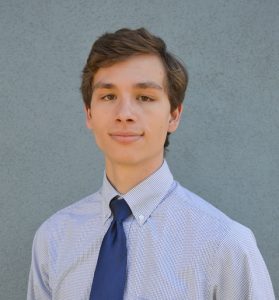
Postdoctoral Scholar, University of California, Los Angeles
Future Impacts of Ground Motions from the February 6, 2023 Türkiye Earthquake Sequence
Abstract: The 2023 Türkiye/Syria earthquake sequence is a once-in-a-century catastrophe, which includes the February 6 M7.8 mainshock followed approximately nine hours later by a M7.7 aftershock, and many smaller aftershocks. These events occurred in a region near the boundary of the Anatolian and Arabian plates (East Anatolian Fault), in the proximity of which numerous ground motion recordings sites had been installed north of the Türkiye/Syria border. As a result, the events were well recorded both near the fault where empirical databases generally lack observations, and at rupture distances up to 571 km. The repercussions of these events will have a lasting effect on the region, and their scientific and engineering impacts will prove to be influential for future ground motion related studies and efforts, such as the NGA-West3 project. In general, the data from this earthquake sequence will be useful for earthquake engineering applications, such as ground motion studies (e.g., ergodic and non-ergodic ground motion model, GMM, development), geotechnical studies (e.g., liquefaction), and structural dynamics. Preliminary spatial analyses of residuals have highlighted complex path effects in the region, likely related to differences in crustal properties between the Anatolian and Arabian plates. Since the events were well recorded over a wide distance range (0.6 – 571 km), the data produced from this sequence can be used to better capture these complex path effects. Furthermore, the M7.8 mainshock produced 25 usable records within 10 km of the rupture surface (38 within 25 km), which represents a magnitude-and-distance range of great interest to engineers. These near-source records are vital to ground motion studies of directivity and permanent-static displacements, and will also be used as input ground motions for response-history analysis of structures. It is the burden of the seismological and earthquake engineering communities to learn from this catastrophe to advance our knowledge and practice in order to mitigate the calamity of such events in the future.
Bio: Tristan E. Buckreis is a postdoctoral scholar in the Civil & Environmental Engineering Department at the University of California, Los Angeles (UCLA). He received his B.S. degree in Civil Engineering from California State University, Long Beach in 2017, and his M.S. and Ph.D. degrees in Civil Engineering (Geotechnical) from UCLA in 2018 and 2022, respectively. His area of expertise is in geotechnical earthquake engineering, with emphasis on ground motion characterization of regional path effects and local site response. His work also includes applications of microtremor-based horizontal-to-vertical spectral ratio (HVSR) in site response prediction, and curation and development of the NGA-West3 Project relational database.
Riccardo Cappa
Senior Consulting Engineer, Simpson Gumpertz & Heger (SGH)
Presentation Title Coming Soon!
Abstract: N/A
Bio: Riccardo Cappa, Ph.D., P.E., has more than 10 years of professional experience in performance evaluation of power and water infrastructures. His academic research examined the seismic hazard and failure potential of levees in the Sacramento-San Joaquin Delta, California, through a combination of geotechnical centrifuge experiments and numerical studies. He is currently a Senior Consulting Engineer at SGH in the Newport Beach (CA) office and specializes in seismic probabilistic risk assessment methods for industrial and power generating plants, with a focus on nuclear power facilities. Riccardo has co-authored more than 30 papers and standards, including several research reports for the Electric Power Research Institute (EPRI). He has recently received the 2022 Heki Shibata early career award from the International Association for Structural Mechanics in Reactor Technology (IASMiRT) for his nuclear research and the 2022 Thomas Middlebrooks award from ASCE GI for his academic contribution to advancing the understanding of the seismic response of organic soils. He has collaborated with EPRI to develop improved equipment seismic capacities based on experience data and Bayesian inference, and has contributed to update and expand the SQUG online database, one of the largest collection of post-earthquake investigation data, including observations from 200+ large facilities subject to 35+ earthquakes. He has performed post-earthquake investigations of power and water infrastructures in Alaska (2018 M7.1), Ridgecrest (2019 M7.1), and Puerto Rico (2020 M6.4), and has recently led the EERI Lifelines reconnaissance team in Turkey following the February 2023 M7.8 earthquake.
Louise K. Comfort
Professor Emerita and Former Director, Center for Disaster Management, Graduate School of Public and International Affairs, University of Pittsburgh
The Gap Between Knowledge and Action: The 6 February 2023 Türkiye Earthquakes
Abstract:N/A
Bio: Louise K. Comfort is professor emerita and former director, Center for Disaster Management, Graduate School of Public and International Affairs, University of Pittsburgh. She is a Visiting Researcher at the Policy Lab, Center for Information Technology Research in the Interest of Society (CITRIS), University of California, Berkeley. She is an elected fellow of the National Academy of Public Administration since 2006 and received the 2020 Fred Riggs Award for Lifetime Achievement from the Section on International Comparative Administration, American Society for Public Administration (SICA-ASPA). Her recent books include: Comfort, L.K. 2019 The Dynamics of Risk: Changing Technologies and Collective Action in Seismic Events, Princeton University Press; Comfort, L.K. and M. L. Rhodes, Eds. 2022. Global Risk Management: The Role of Collective Cognition in Response to COVID-19, Routledge Publishing; and Comfort, L.K. and H. P. Rahayu, Eds. 2023. Hazardous Seas: A Sociotechnical Framework for Early Tsunami Detection and Warning, Island Press. She has done field studies of 24 earthquake response systems in 14 countries, including a small social science reconnaissance study following the 6 February 2023 earthquakes in Türkiye. Her research focuses on decision making in response to natural hazards and other urgent events: earthquakes, hurricanes, tsunamis, wildfire, and COVID-19.
Rupa Garai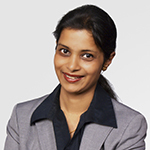
Senior Associate Principal, Skidmore, Owings & Merrill
Lessons Learned from Turkey Earthquake
Abstract: N/A
Bio: Rupa Garai, P.E., S.E., LEED AP, is a Senior Associate Principal at Skidmore, Owings & Merrill, with 20+ years of experience in structural engineering services. She has lead the design of new and retrofitted structure, including mixed-use towers, commercial buildings, airports, courthouses, spec laboratories, education, residential, and office towers. Rupa is interested in exploring innovative concepts and ideas and is actively involved in the research and development of energy-dissipating technologies. She has published 25+ papers and is an active member of American Institute of Steel Construction (AISC) Technical Committee and BSSC 2026 Provisions Update Committee (PUC) and Issue Team (IT), where she chairs and co-chairs various committees.
Kit Miyamoto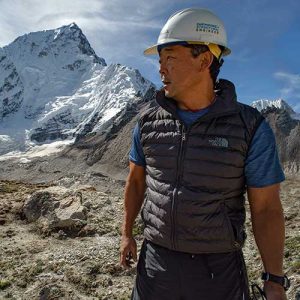
Global CEO, Miyamoto International, Inc.
2023 Türkiye Earthquake: State of the Art Rapid Assessment and Reconstruction of Damaged Structures to Reduce Internally Displaced Population
Abstract: 2023 Turkey earthquake caused 35,000 mid-rise buildings collapse, killed 51,000 people and 4.1 million people homeless. The program conducted by the largest municipality in the affected area, Gaziantep provided innovative rapid shelter solutions for Internally Displaced Population by assisting them in returning to repairable buildings.
Twenty-four hours immediate after earthquake, a team of international and Turkish engineers dispatched to understand damage context and assess ongoing emergency response and early recovery efforts. The Jet Proportion Lab (JPL) provided satellite data showing geographical point changes comparing pre and post-disaster imagery. This data was used to develop damage proxy maps for earthquake-affected cities and towns in the disaster impacted areas of southern Turkey and identify the areas for response attention. Using the remote satellite images, the urban areas within the damage zone was computed.
Next, the program provided technical assistance on cost-efficient, rapidly implementable repairs required to make light and moderate damaged building stock habitable. The program conducted state of art app-based vulnerability assessment surveys to identify the vulnerability classification and cost-efficient repair method based on locally available materials and labors for each damage type. BOQs and repair cost estimates generated enabled households to repair their homes rapidly. 3,100 structures were assessed, supporting an estimated 75,000 people.
Bio: Click here to read about Dr. Miyamoto.
Osman Ozbulut 
Associate Professor, University of Virginia
Bridging the Gap: Understanding Turkey’s February 6 Earthquake Ground Motions Through a Structural Lens
Abstract: The 2023 Kahramanmaraş earthquake sequence included two very high-magnitude earthquakes that occurred approximately 9 hours apart on neighboring fault lines, affecting a wide region in southeastern Türkiye. Not only did the seismic activity exceed expectations, but also the damage observed after these earthquakes surpassed all predictions. In this presentation, we will discuss the damage observed in reinforced concrete (RC) frame and shear wall buildings, as well as the performance of seismically isolated RC buildings. This discussion will take into account the seismic demands imposed on such structures, estimated from ground motion measurements obtained from the nearest seismic stations. We will also explore the effects of changes in seismic hazard maps and construction practices on the observed structural performance. The lessons learned from these events can be applied to the design and construction of future buildings, enhancing their resilience in the face of seismic activity and contributing to the overall safety of our built environment.
Bio: Osman Ozbulut is a Professor of Civil Engineering in the Department of Civil and Environmental Engineering at the University of Virginia. His research focuses on advancing a new generation of resilient and sustainable civil infrastructure through innovations in structural systems, materials, and sensing technologies. He has conducted extensive research on developing and characterizing shape memory alloy (SMA)-based self-centering passive energy dissipation and seismic isolation devices, aimed at mitigating damage and enhancing the post-event functionality of buildings exposed to seismic hazards. He is a member of the American Society of Civil Engineers (ASCE)Infrastructure Resilience Division (IRD) Emerging Technologies Committee, the ASCE Structural Engineering Institute(SEI) Seismic Effects Committee, and the Structural Control and Sensing Committee. Additionally, he serves as an Associate Editor for the Journal of Intelligent Material Systems & Structures, showcasing his commitment to advancing the field.
Grace Parker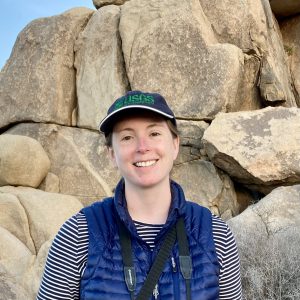
Research Geophysicist, United States Geological Survey Earthquake Science Center
Characterization of Source, Path and Site Effects on Ground Motions From the 2023 Kahramanmaraş, Türkiye, Earthquake Sequence
Abstract:We seek to understand the physical processes that generated the strong ground motions observed during the 2023 Kahramanmaraş, Türkiye, earthquake sequence, reasons why recorded motions may differ from existing ground motion models (GMMs), and factors controlling the observed variability. The devastating 2023 Türkiye earthquake sequence, including the M7.8 Pazarcik mainshock and the M7.5 Elbistan aftershock, occurred in the Eastern Anatolian Fault Zone. Because these destructive earthquakes represent an unprecedented set of near-source ground-motion records, understanding their genesis could improve GMMs and hazard estimates in Türkiye and worldwide. We perform an ensemble GMM residual analysis, examining ground motions from the 2023 sequence as well as other previous regional earthquakes, using a total of 63 M5+ events recorded on 1116 stations. Using many smaller earthquakes allows for robust sampling of source, site, and path effects, including consideration of more complex spatially varying and azimuth-dependent effects that we might expect to be present on a nationwide scale. We consider ground-motion residuals relative to the reference GMMs of Boore et al. (2014) and Kale et al. (2015) for spectral acceleration between 0.05s and 10s and peak ground motions. This talk will describe the partitioning and analysis of residuals into components representing repeatable source, path, and site effects towards understanding the relative contributions and physical implications of each.
Bio: Grace Parker is a research geophysicist at the USGS Earthquake Science Center. Her focus is understanding and modeling earthquake ground motions, with a special interest in seismic site response. She has developed models as a part of the NGA-East and NGA-Subduction projects that have been adopted for use in the USGS National Seismic Hazard Model. She is also involved in the USGS-led Shake Alert earthquake early warning project, where she works to determine the best real-time methods to estimate shaking intensities used to generate alerts. She holds a B.S. in Applied Geophysics and a Ph.D. in Civil Engineering from UCLA.
Esra Zengin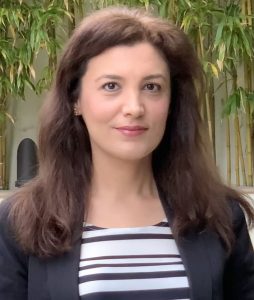
Senior Researcher, Natural Hazards Risk and Resiliency Research Center, University of California, Los Angeles
Investigation of Damage Potential of Ground Motions of the 6 February 2023 Pazarcik Turkey Earthquake by Developing Spatial Distribution of Inelastic Spectra
Coauthored by Yousef Bozorgnia, Aidin Tamhidi, Silvia Mazzoni
Abstract: On February 6, 2023, a devastating earthquake of magnitude 7.8 struck the southeastern part of Turkey, followed by a powerful aftershock with a magnitude of 7.7. Extensive damage in southern Turkey and northern Syria posed significant challenges for modern seismic design and existing structures’ resilience. This study primarily focused on evaluating the destructive potential of ground motions resulting from the Pazarcik mainshock, with a key emphasis on analyzing inelastic strength demand spectra. These spectra provide invaluable insights, particularly when considering the yield coefficient, denoted as “Cy”. The Cy represents the ratio between a structure’s yield strength (the point where it starts to undergo plastic deformation) and its total weight. In seismic design, engineers ensure the Cy value matches the desired ductility level, which characterizes a structure’s capacity to deform and absorb energy without failing. This Cy-ductility relationship is vital in creating earthquake-resistant buildings by balancing strength and ductility. Inelastic constant-ductility spectra were constructed by utilizing recording stations located within 100 km of the rupture distance (i.e., the closest distance to the fault plane). The results showed that, for structural periods of 0.5 seconds and 1.0 seconds, the Cy demand at a ductility level of 3 exceeded the Cy levels specified in the seismic design code for the 475-year return period, particularly when the rupture distance was less than 10 km. Given recorded ground motions, we generated time series for non-instrumented sites using a Gaussian Process Regression model (Tamhidi et al. 2023). Subsequent inelastic analyses were conducted, employing simulated ground motions to examine the variation in ductility demand across the area. The study concluded by comparing its outcomes with the observed damage patterns.
Bio: Dr. Esra Zengin holds a Ph.D. in Structural and Earthquake Engineering from Bogazici University, Istanbul, and received a B.S. degree in Civil Engineering from Middle East Technical University, Ankara, Turkey. She joined UCLA’s Natural Hazards Risk and Resiliency Research Center in 2022, following research positions at UC Davis and UC Berkeley, and a faculty position at Beykent University, Istanbul. Her research interests include characterization and modeling of ground motion, probabilistic seismic hazard analysis, seismic performance and risk assessment of structures.
Reid Zimmerman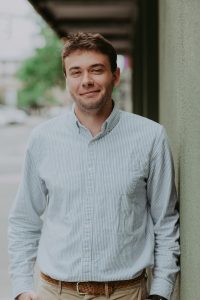
Technical Director, KPFF
Recovery Lessons for the U.S. in the Wake of the Kahramanmaraş Turkey Earthquake Sequence
Abstract: Southeastern Turkey and northern Syria were struck by two significant magnitude earthquakes on February 6th, 2023 that led to widespread severe building damage and collapse and an earthquake-affected area of 14 million people. Reid traveled to the earthquake-affected areas as part of an ASCE Structural Engineering Institute (SEI) team approximately seven weeks after the earthquakes. He will share his and the team’s observations from reconnaissance conducted over 10 days and more than eight cities, especially focusing on implications for recovery following a major earthquake in the U.S.
Bio: Reid Zimmerman is the Technical Director for the Portland, Oregon office of KPFF and has focused his career on advanced structural systems (e.g., seismic isolation, energy dissipation, rocking systems, etc.) and complex analytical techniques for assessing the effects of extreme hazards on structures. He is active in U.S. code development through ASCE 41, ASCE 7 and the Building Seismic Safety Council including chairing subcommittees on functional recovery and seismic isolation and energy dissipation.
Ali Sumer
Chief Intelligence Officer, Emergency Operations Center, California Department of Health Care Access and Information (HCAI)
2023 Turkiye Earthquake Sequence: Performance of Hospitals
Abstract: The 2023 Türkiye Earthquakes provide an unprecedented learning opportunity due to the strong earthquake shaking affecting modern engineered buildings. A hospital reconnaissance team, consisting of engineers from USA and Türkiye and a medical doctor from Türkiye, visited many hospitals in the earthquake area. The team collected structural and nonstructural data to identify what conditions allowed hospitals to continue to serve the community and which prevented the continuity of care. Of particular interest was learning the impediments to functional recovery.
Bio: Ali is the manager of hospital seismic retrofit program at California Department of Health Care Access and Information (formerly called OSHPD). He is a licensed structural engineer with a Ph.D. in Structural Engineering. He plays an active role on Emergency Operations Center at HCAI, acting as chief intelligence officer. Prior to joining the state, Ali worked in private industry for 9 years. He has performed several seismic retrofit projects, and has experience in performance-based design using nonlinear analysis techniques, building collapse risk analysis, and equipment shake table tests. He served as president of SEAOC Central. He is the co-creator of seismicmaps.org website to serve the engineering community.
5th Kenji Ishihara Colloquium Series on Earthquake Engineering
Advancing Earthquake Engineering and Functional Recovery in the Wake of the Turkey Earthquake
Join us for this free three-part webinar series on the lessons learned from the 2023 Kahramanmaraş, Turkey Earthquake Sequence. Researchers, expert engineers, and social scientists will come together in this Kenji Ishihara colloquium to discuss structural engineering and the far-reaching social implications of the Turkey earthquake sequence. Experts will share their insights on the lessons learned from the Turkey earthquake and how these are shaping the future of earthquake engineering, disaster preparedness, and response to enhance engineering practices and expedite seismic functional recovery.
Click image on right to view event flyer.
PROGRAM
Webinar #1: Thursday, October 5th, 2023, 11am-2pm PDT
Lessons Learned from Processing Ground Motions & Code Comparisons
Panelist 1 – Grace Parker, USGS Earthquake Science Center, Characterization of Source, Path and Site Effects on Ground Motions From the 2023 Kahramanmaraş, Türkiye, Earthquake Sequence
Panelist 2 – Tristan E. Buckreis, UCLA, Future Impacts of Ground Motions from the February 6, 2023 Türkiye Earthquake Sequence
Panelist 3 – Osman Ozbulut, University of Virginia, Bridging the Gap: Understanding Turkey’s February 6 Earthquake Ground Motions Through a Structural Lens
Panelist 4 – Esra Zengin, UCLA, Investigation of Damage Potential of Ground Motions of the 6 February 2023 Pazarcik Turkey Earthquake by Developing Spatial Distribution of Inelastic Spectra
Webinar 2: Thursday, October 12th, 2023, 11am-2pm PDT
Functional Recovery of Buildings
Panelist 1 – Ali Sumer, HCAI
Panelist 2 – Reid Zimmerman, KPFF, Recovery Lessons for the U.S. in the Wake of the Kahramanmaraş Turkey Earthquake Sequence
Functional Recovery of Lifelines
Panelist 3 – Riccardo Cappa, Simpson Gumpertz & Heger (SGH)
Panelist 4 – Ezra Jampole, Exponent
Panelist 5 – Rupa Garai, Skidmore, Owings, & Merrill, Lessons Learned from Turkey Earthquake
Webinar 3: Friday, October 27th, 2023, 11am-2pm PDT
Impacts to Social Recovery
Panelist 1 – Louise K. Comfort, University of Pittsburgh, The Gap Between Knowledge and Action: The 6 February 2023 Türkiye Earthquakes
Panelist 2 – Kit Miyamoto, Miyamoto International, Inc., 2023 Türkiye Earthquake: State of the Art Rapid Assessment and Reconstruction of Damaged Structures to Reduce Internally Displaced Population
REGISTRATION
Click here to register for the colloquium.

